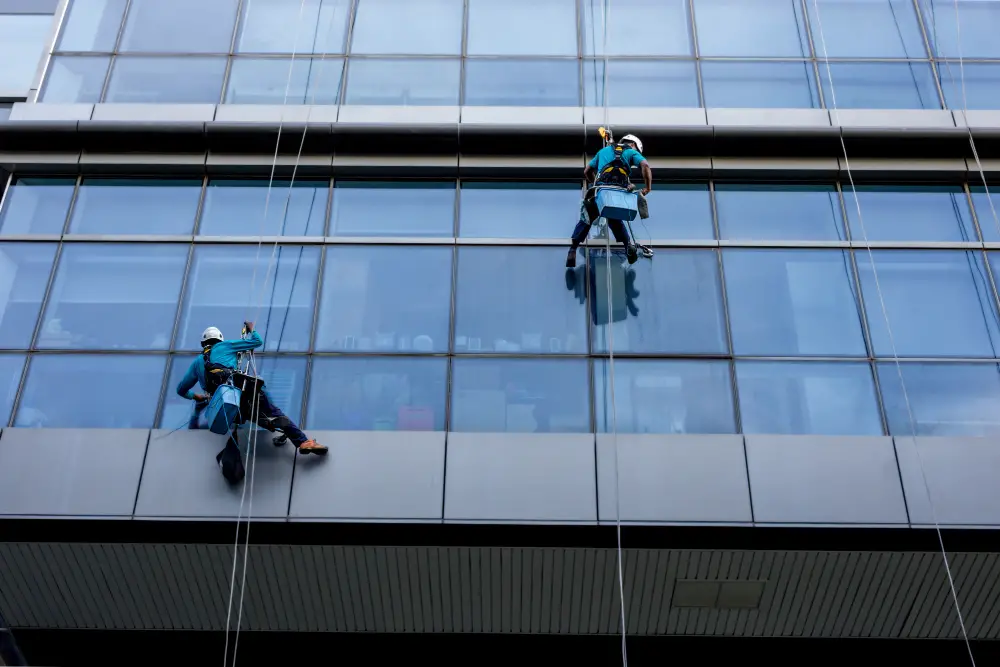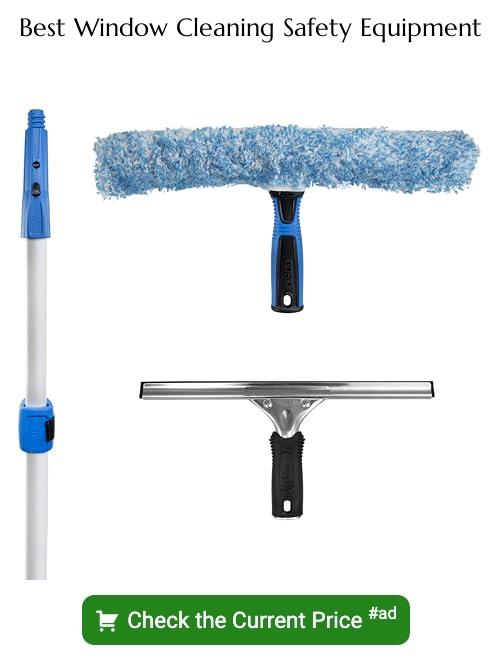Explore the often overlooked risks associated with window cleaning through a deep dive into accident statistics in this enlightening blog.
Diving straight into the heart of the matter, window cleaning, while seemingly innocuous, can present certain risks and hazards. In fact, according to the U.S. Bureau of Labor Statistics, window cleaning accidents account for a significant number of annual injuries in the professional cleaning industry.
This article is poised to offer you a comprehensive analysis of these statistics, shedding light on the frequency, severity, and common causes of such incidents. As you navigate through, you’ll also find insights into safety measures that can mitigate these risks, providing a holistic understanding of the topic at hand.

Stay with us to delve deeper into the fascinating, and crucial, world of window cleaning accident statistics.
There were 88 window cleaning accidents over a 15-year period
Over a span of 15 years, the industry recorded 88 accidents involving window cleaners. This figure emanates from various incidents encompassing minor injuries, severe traumas, and, in some unfortunate instances, fatalities.
These accidents highlight the prevalent risks that window cleaners face as they conduct their day-to-day roles, often in precarious conditions. Despite ongoing advancements in safety procedures and equipment, the data underlines the inherent dangers lurking within the profession.
It’s a critical reminder for companies to continuously review and enhance occupational safety measures, providing the best possible protection for these essential workers.
62 accidents resulted in fatalities
Over the examined span of 15 years, an alarming figure of 62 instances concluded in tragic loss of life, underscoring the perils associated with the profession.
This conveys the solemn reality that those within the industry must routinely face, bolstering the urgency for improved safety measures and regulations.
It’s indubitable that each fatality sends tidal waves of impact to families, friends, and the wider window cleaning community, amplifying the need for proactive solutions to the identified risks.
The harsh implication is that each occurrence has potential to not only harm, but snatch away lives in the blink of an eye, thereby underlining the risk embedded in the profession.
Such a troubling statistic amplifies the absolute necessity for thorough safety training and strict compliance to de-risk the task at hand.
The primary fall hazard is climbing ladders and using aerial lifts
Some reflections on this:
- Prevalence of Use: Ladders and aerial lifts are commonly used tools in various professions, from construction and window cleaning to maintenance tasks. Their frequent use can expose workers to risks if not used correctly.
- Training & Safety Protocols: This highlights the pressing need for rigorous training and established safety protocols when using such equipment. Employers must ensure workers are well-versed in safety measures.
- Equipment Maintenance: Regular checks and maintenance of equipment like aerial lifts can prevent malfunctions, further reducing the risk of falls.
- Technological Solutions: This could prompt a push towards developing better, safer equipment or alternative technologies to reduce the dependency on ladders and aerial lifts.
- Legislation and Regulation: Regulatory bodies should be aware of such stats to formulate or update policies ensuring worker safety.
- Economic Implication: Falls from heights can lead to significant medical expenses, loss of workdays, and even legal implications for businesses. Investing in safety can thus be economically prudent in the long run.
One of every 200 window cleaners lost life annually in New York City alone
Tragedy strikes the window cleaning trade with a stark regularity in New York City. When we factor in the frequency of lethal incidents, it paints a somber picture for those braving the heights.
Every year, a window cleaner dies in the line of duty out of every 200 in the city. Therefore, for every skyscraper in the backdrop of the ever-expanding NYC skyline, one can expect that a tireless window cleaner sadly succumbed while at work.
This decidedly high fatality rate underscores the inherent risks associated with this profession, particularly in a metropolitan landscape riddled with high-rise structures.
Window cleaning is one of the more hazardous trades
Tasked with scaling tall structures and contending with unpredictable weather, window cleaners face a unique set of risks that make their occupation particularly perilous when compared to others. Their vulnerability is compounded by the nature of their work, which involves working with ropes and pulleys at towering heights.
The precarious conditions sometimes lead to devastating mishaps and accidents, positioning this profession among the higher-risk industries. Adequate insurance and strong adherence to safety protocols are therefore vitally important in reducing hazards and protecting the lives of those involved in this challenging trade.
Up to 30 people suffer serious injury on the window cleaning job each year in the UK
Yearly, in the United Kingdom, the startling figure stands up to 30. This marks the number of individuals experiencing grievous wounds associated with their profession – window cleaning. These injuries range from broken limbs to severe spinal injuries, mainly attributed to falling from dangerous heights.
As it stands, the annual toll confirms the window cleaning profession as one of the riskier trades. Employers are encouraged to evaluate safety measures and provide advanced training to prevent such accidents, while workers are urged to exercise utmost caution during operations.
Window cleaning became more necessary during the construction boom of 1860.
The construction boom in the 1860s brought about a significant increase in the demand for window cleaners. With the rise in high-rise buildings, the need for trained professionals to maintain the architectural beauty was paramount.
This era marked the beginning of significant growth in the industry as the roles of window cleaners transitioned from merely washing ground-level windows to maintaining and enhancing the appearance of lofty skyscrapers.
In essence, the 1860s signaled a major shift in the industry’s landscape, emphasizing the vital role of window cleaners in maintaining the aesthetics of everyday architecture.
The US window cleaning market size is 2 billion dollars
With a monetary valuation reaching into billions, the window cleaning industry indeed holds significant economic weight in the United States. This substantial market size is due in part to the country’s vast array of high-rise buildings and structures, each requiring regular window maintenance and cleaning.
The rising demand for clean, spotless views in both residential and commercial properties continues to fuel the growth of this thriving sector, underscoring the need for safety practices amidst the scale of operations. This economic indicator provides a perspective on the underlying magnitude of window cleaning incidents, bringing to light the specific need for safety mitigations, precautions, and reforms.
Injuries sustained in window washer accidents can result in traumatic injuries or death
The severity of injuries resulting from window washing mishaps varies greatly, but the worst cases can be life-altering, even fatal. From over three stories high, falls often lead to catastrophic injuries such as fractures, spinal cord injuries, or traumatic brain injuries.
Lower falls, below three stories, tend to have less severe consequences, generally resulting in fractures or sprains. However, even these can lead to long-term health issues or disability.
The danger doesn’t stop at falling, as improperly secured or mishandled tools can cause serious damage. From deep cuts to significant eye injuries, improperly stored or handled window cleaning equipment is another major hazard.
In summary, window washers must meticulously follow safety guidelines to avoid terrifying scenarios.
Window cleaning can cause life-changing injuries or, possibly, death
In high-risk professions like window cleaning, workers undergo hazards that could result in inadequate mobility, chronic pain, or cognitive impairments. These issues often stem from accidents such as falling from substantial heights or getting struck by unsecured equipment.
Regulations, training, and better equipment are crucial to mitigate these risks and maintain a safer work environment.
References
- https://www.ipcworldwide.com/
- https://www.osha.gov/
- https://squeegeesquad.com/
- https://brownssafetyservices.co.uk/
- https://ohsospotless.com/
- https://www.weitzlux.com/

